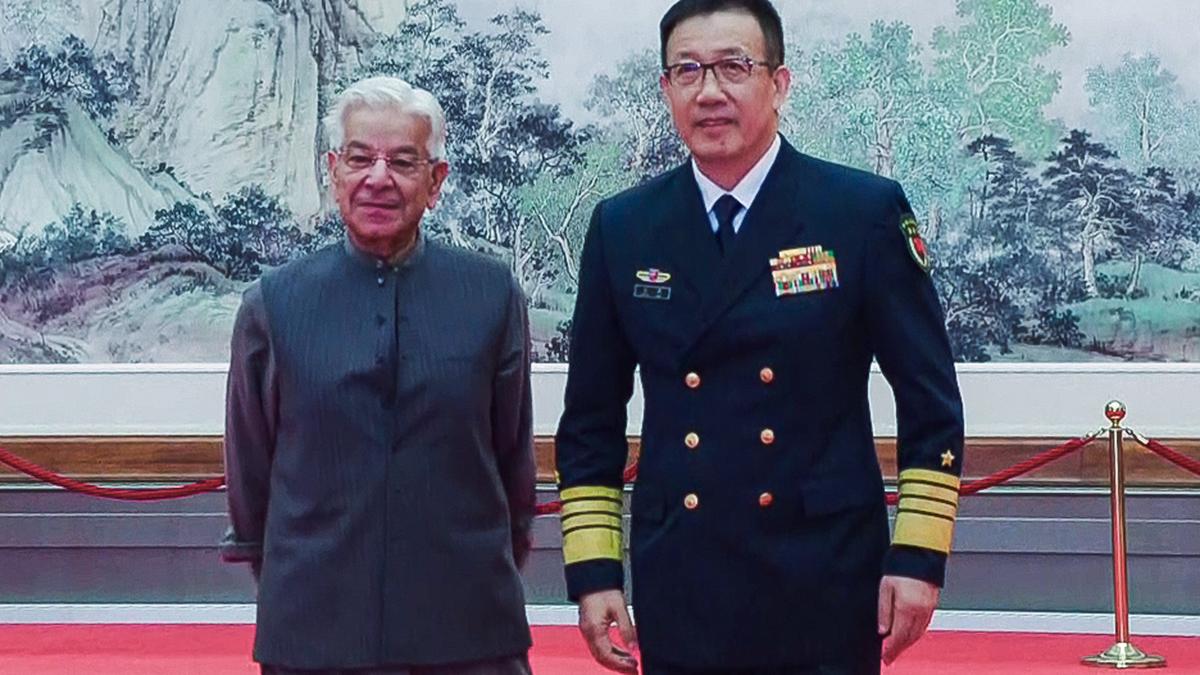Indian strategists have long worried about the deepening security partnership between China and Pakistan. The bilateral relationship today extends well beyond arms sales to include diplomatic shielding, intelligence sharing, and even elements of tactical integration. Some observers, however, suggest a more diabolical possibility: the threat of a “reinforced one-front war”— a scenario in which India would face Pakistan and China fighting together on a single front. Proponents of this view imagine a deeper military integration, with Pakistan benefiting directly from Chinese technology, intelligence, security assets, and even military personnel. When the balloon goes up, they warn, China would act as a strategic enabler on India’s western front, turning Pakistan’s challenge into a more formidable, integrated threat.
The argument seems almost a truism at first glance. China’s support for Pakistan is undoubtedly real, sustained, and strategically motivated. Even so, describing it as a “reinforced one-front war” risks overstating the degree of operational integration in ways that misread Beijing’s intentions and distort India’s own strategic calculus. At the very least, it calls for a dispassionate assessment of the facts.
Not one front
Let us start with the undeniable. China has become Pakistan’s principal arms supplier, providing everything from advanced drones to missile systems, naval vessels, and ISR (intelligence, surveillance, reconnaissance) platforms. China’s BeiDou satellite navigation system supports Pakistani missile targeting. During moments of crisis — such as the Balakot strikes and Operation Swift Retort — Beijing has offered diplomatic cover, blocking UN sanctions and tempering the international fallout. China ensures Pakistan remains a capable military adversary, able to field modern platforms and fight on more equal terms with India, despite economic constraints. Chinese weapons lock Pakistan into a client-supplier relationship that deepens Beijing’s political influence in Islamabad.
Worrying as these developments are, they do not readily lend themselves to the notion of a single, integrated military front. Arms transfers — even at scale — are not the same as a shared war plan. India itself is a major buyer of Russian, Israeli, American, and French military systems. Nobody claims India is fighting America’s or Russia’s wars by proxy. India has even begun exporting weapons — such as BrahMos missiles to the Philippines — without any suggestion from Beijing that Manila is fighting an Indian war against China. Likewise, Azerbaijan does not accuse India of forming an integrated front with Armenia, despite significant Indian arms sales in recent years. Similarly, advanced sales — such as China’s potential supply of J-35 stealth fighters to Pakistan, or India’s exploration of Russia’s Su-57 — do not imply joint war planning or a unified front.
China may have provided direct military support to Pakistan during Operation Sindoor, even monitoring the performance of its weapons systems in Pakistani use, as Indian military officials recently stated. However, monitoring is standard practice for arms suppliers. The U.S., Russia, Israel, and France all routinely do this, and India itself will understandably be interested in how the BrahMos missile performs in the Philippines. Some might argue that this is a false equivalence — that the China–Pakistan strategic partnership is by no measure comparable to the relationship between India and the Philippines. This does not detract from the principal issue: monitoring and even limited intelligence sharing are typical of arms sales relationships. But they are not evidence of a single, unified war front with joint command or shared operational planning.
What many alarmist narratives often gloss over is that China and Pakistan have very different strategic interests vis-à-vis India. For Pakistan, the military contest with India is existential — a constant, defining rivalry. For China, India is a regional competitor to be managed and contained, but not an existential enemy. Beijing’s principal strategic focus remains the U.S. While China has much to gain from an India tied down on its western border, Beijing’s preferred denouement is an India that is cautious, preoccupied, and wary of escalation. That is precisely why China might be careful about escalation itself. This caution is evident in the absence of any commitment to join Pakistan in a full-scale war with India. Indeed, no joint commands exist; no integrated operational planning has been demonstrated. China-Pakistan military exercises, while symbolically important, fall short of the combined-force planning seen in alliances such as NATO or even U.S.-South Korea.
Challenges for India
This is not to deny the challenge of China-Pakistan collusion altogether. Their defence partnership does complicate India’s security environment, increasing the costs of military preparedness and the demand for sophisticated countermeasures from air defence to ISR and precision strike capabilities. Even so, framing the threat as a single “reinforced one-front war” risks misunderstanding. It imagines a level of operational integration that does not exist, encouraging Indian planners to over-invest in blunt, worst-case military postures that may be unaffordable or strategically rigid. It also underplays opportunities for diplomatic management with China, further shrinking India’s options.
Beijing may shield Pakistan diplomatically and arm it militarily, but it also has an interest in limiting escalation that could trigger nuclear thresholds or force Chinese military intervention. That is a lever India can look to exploit. Overstating China’s willingness to fight India directly on Pakistan’s behalf risks creating a self-fulfilling prophecy in which all crisis management is abandoned in favour of maximalist, binary threat perceptions.
However serious the China–Pakistan nexus may appear, Indian planners ought to avoid turning prudent concern into simplistic formulations. Instead of declaring the threat a single, unified front, Indian analysts must see it for what it is: a complex, asymmetric partnership in which China equips Pakistan to be a tougher local rival without assuming the costs and risks of fighting India itself.
That is the harsh strategic truth. Planning for it requires clear-eyed analysis, not rhetorical overreach.
Abhijit Singh is a retired naval officer and former head of maritime policy at ORF, New Delhi
Published – July 17, 2025 12:42 am IST
